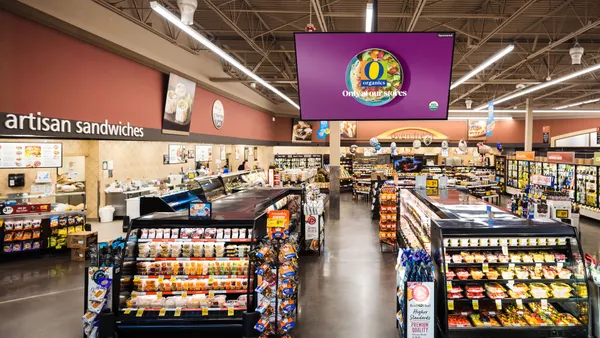Dive Brief:
- Snap Inc., the parent company of the video messaging app Snapchat, missed revenue forecasts in the company's first earnings report since going public in March, but execs put a strong emphasis on the success of newer ad products like its Snap Ads API in its first quarterly earnings call. Frequent user engagement was also emphasized as a strength for the platform, with the average daily active user (DAU) engaging the app for 30 minutes a day.
- Twenty-percent of Snap Ad impressions were delivered programmatically through the Snap API in Q1, according to CEO Evan Spiegel. Snap Ads, the platform’s full-screen, vertical video format, were described as "world-class" and providing strong delivery on ROI for brands on the platform.
- On the engagement side, Chief Strategy Officer Imran Khan cited Nielsen data that found 45% of 18- to 34-year-olds in the U.S. use Snapchat on any given day, making for engagement that is 9x greater than the average daily reach of the top 15 TV networks and almost 5x more than that of the top TV network; 87% of Snapchat’s U.S. DAUs aged 18 to 34 can’t be reached by any of the top 15 TV networks, Khan said.
Dive Insight:
Marketers hoping Snap would have some surprises in store were likely disappointed the company continued to sing the same tune of young user engagement for Q1. Spiegel even noted that Snap is "famous for not giving guidance on the product pipeline," though he mentioned he was excited about Snapchat’s TV-like Shows, which might present new opportunities for brands to get in front of eyeballs.
Snapchat needs to win over marketers if it is to drive revenue growth — something that is key for keeping investors happy now that it is a public company — as advertising sales have been the platform's primary source for monetization to date and this is likely to remain the case.
Snapchat, on the whole, was positioned during the call as an alternative channel for advertisers to reach teens who are more often ignoring traditional TV entirely, per the Nielsen data cited by Khan. The app has become well-known for dominating the attentions of younger demographic groups like Gen Z and millennials, to the point where eMarketer recently reported it rivals Facebook for teen usage despite being one-eighth of that platform's size. In terms of cultivating a broader audience, Spiegel said that sessions were up for the 25-plus age demo, though he provided no specifics.
Khan highlighted coverage of the Oscars ceremony as an example of Snapchat's power, and he said the event received over 250,000 Our Stories submissions from users and reached an audience of over 21 million unique viewers globally. While these examples point to Snapchat's promise, Snap's Q1 earnings were widely viewed as a major disappointment.
Snap overall saw $149.6 million in Q1 revenue growth, seriously short of analysts’ expectations, according to The Wall Street Journal. Audience growth climbed just 5% to 166 million DAUs from 158 million in Q4. Snap, however, seemed generally unconcerned with the sluggish growth and the looming shadow of major competitors.
One of Snap’s biggest threats is Facebook, which has seen success with a number of products that directly copy from Snapchat, including Instagram Stories. Launched last August, Instagram Stories already has more daily active users than Snapchat does. Facebook is also pushing to offer more TV-like content akin to Snapchat’s Shows and honing in on Snap's efforts to position itself as a camera company.
On a recent Q1 earnings call, Facebook CEO Mark Zuckerberg noted that, while his company was late to the camera and video messaging space, he now thinks of it as a leader and believes that will continue to be the case going forward. Spiegel rebuked that claim when pressed by investors.
"If you want to be a creative company you've got to get comfortable with and basically enjoy the fact that people are going to copy your products if you make great stuff," he said. "At the end of the day, just because Yahoo, for example, has a search box, it doesn't mean they are Google."
When asked why advertisers would pick Snapchat over Facebook, Spiegel pointed to his platform's audience but also Snap’s growing business around location data, which he noted is driving “very strong” ROI.
For another look at Snap's Q1 user and revenue growth, check out Andrew Hutchinson's analysis over at Social Media Today.










